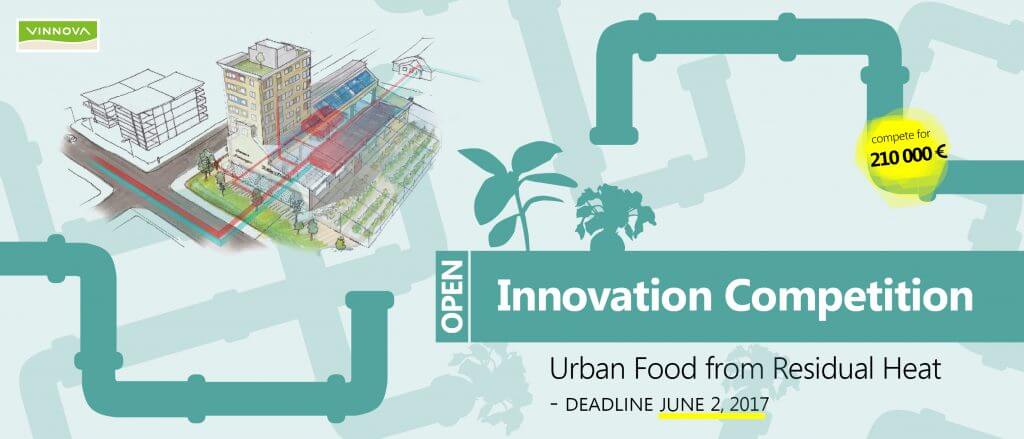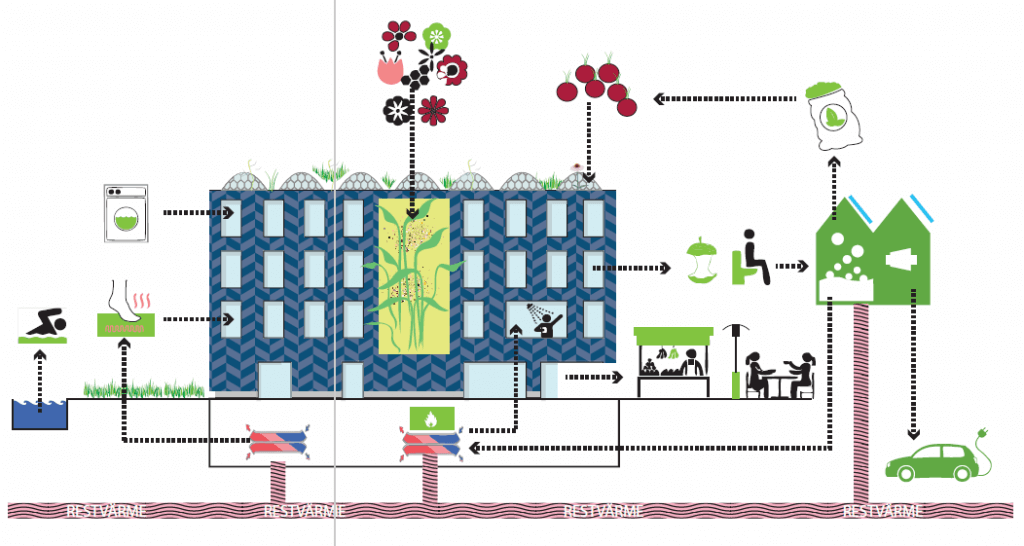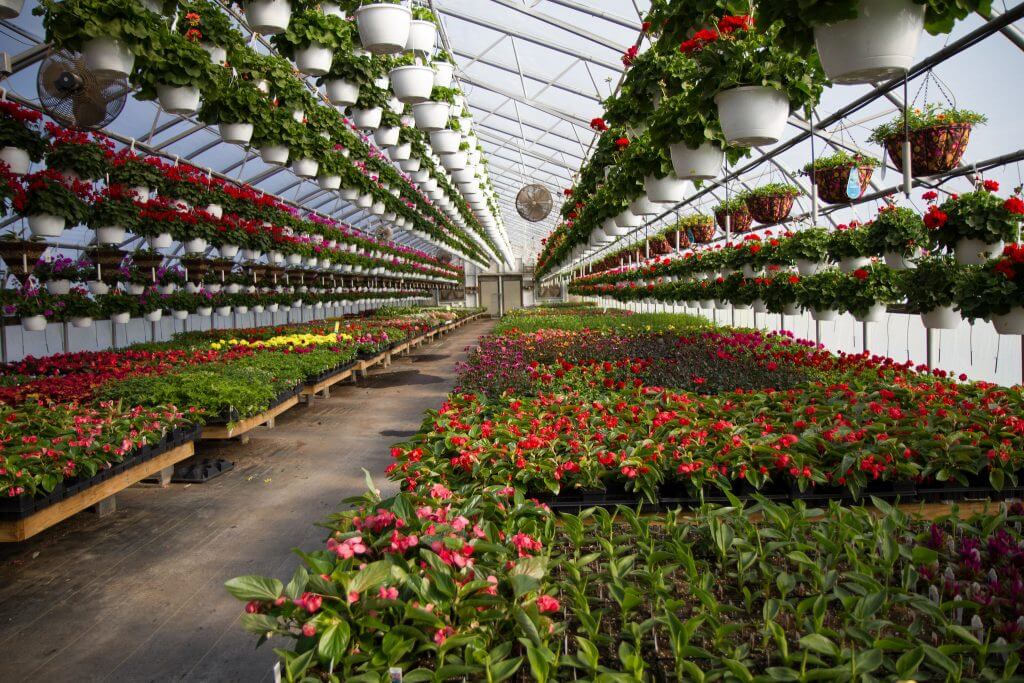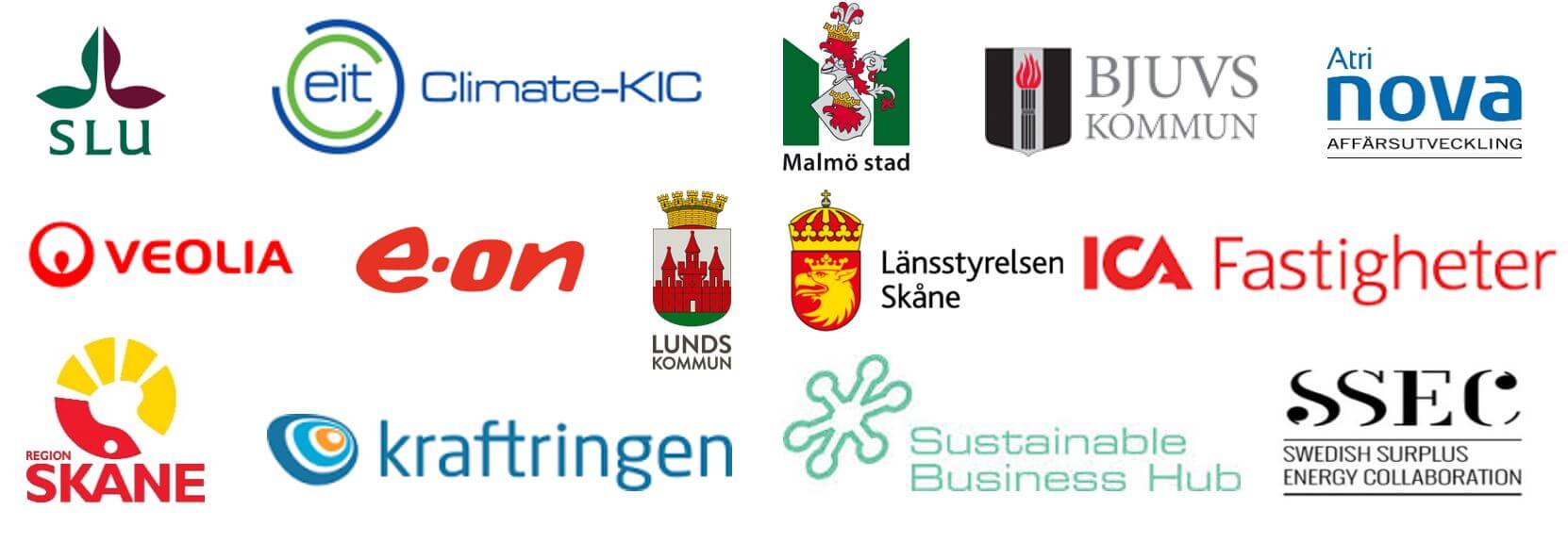Urban Food from Residual Heat – Open Innovation Competition

The Swedish cities of Malmö, Lund, Oskarshamn and Bjuv in collaboration with E.ON, ICA Fastigheter, Veolia and more, are looking for creative partners with innovative solutions to be involved in a new venture. This new venture will use wasted heat energy emitted from industrial sources in the production of food or other biological products within the urban environment. Residual heat often emitted as clean warm water represents a waste of both energy and resources that is ultimately detrimental to the local and global environment.
These four municipalities plan to capture this residual heat and use it to produce fish, vegetables and other biological goods in production units located in their respective urban areas. They aim to incorporate the concepts of sustainability, the circular economy and zero waste into a new local service, one which will have positive socioeconomic benefits for the cities, such as employment, education and urban gentrification.
In their global search for solutions, these municipalities have announced a joint Open Innovation Competition from which the winning ideas will be taken and incorporated into a final proposal. Those involved in the final winning consortium will be able to collaborate with world leading companies such as E.ON, Veolia and Kraftringen on implementing their proposal in one or more of the host cities. The competition is supported by Vinnova, Sweden’s innovation agency. The consortium is seeking the submission of ideas to solve a number of challenge areas, as well as those that may build and improve upon the whole concept of using waste heat for food production.

Schematic of the potential use of residual heat in cities. From the innovation competition Residual Heat in Future Cities, 2nd prize Residual Heat Concept for Sustainable Estate management. (Copyright: Ingrid Wingård, Minus Tio AB, 2015)
Open Innovation Challenge Areas
#1 Technical Challenges – these refer to the obstacles faced by the project which only technology will be able to overcome. The vision is to collect the waste heat at source and transport it – most probably as warm water – to the site where it can be used to heat facilities and equipment for the production of vegetables, fish and other biological goods. This however, is not an easy task and there are challenges in every aspect of this journey. Including:
- Identification and capture of waste heat
- How can the water temperature be maintained between source and site? The temperature is the value of the water, minimizing heat loss therefore maximises the value of the resource.
- How can supply fluctuations be overcome? It is unlikely that heated water flows will remain constant throughout any period of time. How can we regulate and/or store the heat for use when the rate of supply declines?
#2 The biological production challenges – there are many of these involved in building and operating a successful and efficient urban food production unit. Within the unit itself there are many factors which will enhance the project’s overall productivity. These include:
- Identifying the optimal temperature, lighting, ventilation, soil and PH values.
- Obtaining the optimal mix of cultivated plants and fish and aquatic livestock
- Selecting appropriate and sustainable agricultural/aquacultural inputs such as fish feeds and plant fertilisers.
It is intended that the production unit functions as a demonstration of how the circular economy is possible in today’s world. Finding new and innovative ways to reduce waste within the unit’s operations is therefore vital for the project’s ultimate success.
#3 Business challenges – the project aims to deliver not just food production but wider social value to the community alongside economic sustainability. Creative and ambitious plans and strategies are sought to achieve that. Elements that need to be considered include:
- The production volume and the price elasticity of the end consumers in relation to the production output
- The potential for job creation
- Social benefits such as the potential for site visits, knowledge sharing, etc.
Although the basic elements of the vision are fixed eg. food and other biological production with the use of waste heat, there are many other areas where new and innovative proposals and ideas can fill gaps or build upon the concept to make its realisation an astounding success.
How the competition works
The Open Innovation Competition is structured in three distinct stages, each of which will see the final number of participants reduced. It is also designed to be much more than a traditional competition. By incorporating the principles of Open Innovation into the DNA of the processes, it will act as a platform for innovative participants to collaborate and co-develop their ideas within a community of driven, likeminded people.
Participants reaching the second round will be offered professional advice and assistance on how best to progress with turning their ideas into reality.
SEK 2 million (approx EUR 210,000) is available in prize money for the whole competition. Awards will be made to those participating at each stage of the competition from the second round onwards, with a significant amount reserved for the winner. The winner will also have the opportunity to build on their exciting idea and be involved in the final proposal. The prize money is an award from Vinnova, Sweden’s innovation agency, together with the organising partners.
The competition manual, proposal template and further information about the sites is available for download from the tabs below. The documents will be continuously updated until 1 May. No changes will be made after that date.

Floriculture, an example of just possibility that could be achieved from this Open Innovation Competition. From Flickr.com (Copyright: Ken Roberge, Ken Roberge Imagery, 2014)
[toggle title=”Competition Programme” opentext=”more” closetext=”close” status=”closed”]
| Stage one | |
| Open for submissions | 29 March 2017 |
| Deadline for submission of solutions | 5 June 2017 UPDATED! |
| Pitch event | 2 – 3 October 2017 |
| Announcement of innovators selected for stage 2 | Late October 2017 |
| Stage two | |
| Interaction with selected innovators | February 2018 |
| Announcement of innovators selected for stage 3 | March 2018 |
| Stage three | |
| Interaction with selected innovators | August 2018 |
| Presentation of final winner | September 2018 |
Last updated 2 June
[/toggle]
[toggle title=”Presentation Slides from the Food in Cities Conference 19 September” opentext=”more” closetext=”close” status=”closed”]
- Håkan Sandin – SSEC
- Leon Ballin – Sustainable Food Cities
- Gunilla Andersson – The City of Malmö
- Christian Wilke – Lund Municipality
- Bengt Fellbe – Food Valley of Bjuv
- Michael Agustsson – Oskarshamns Kommun
- Jenny Bergsten – Skåne
- Nina Vogel Annsofie Wahlstrom – SLU
- Dagmara Nawrocka – Länsstyrelsen Skåne
- Sonny Stromberg – EON
- Miriam Korberg – ICA Gruppen
- Björn Frostell – Ecoloop
- Bengt Persson – Vinnova
- Fredrik Olsson – Season 5
[/toggle]
[toggle title=”Competition Manual” opentext=”more” closetext=”close” status=”closed”]
The Competition manual contains further information about: competition objectives, specifications and criteria, important dates, IPR and other legal issues, the structure of the process and how it will be managed, the competition partners and challenge prizes.
We highly recommended that you read this document carefully before submitting a solution. Please download the Competition Manual.
Last updated 7 April
[/toggle]
[toggle title=”Site Locations” opentext=”more” closetext=”close” status=”closed”]
The site location document will provide you with details of the proposed site in the four locations. It outlines the site’s needs and requirements that will have to be met by the winning solution before the end of the competition. Please download the documents here:
Last updated 6 April
[/toggle]
[toggle title=”Proposal Template” opentext=”more” closetext=”close” status=”closed”]
All solutions must be presented via this submission form. Submissions that are not sent via this route will not be considered.
Last updated 7 April
[/toggle]
[toggle title=”Answers to competition questions” opentext=”more” closetext=”close” status=”closed”]
Questions and answers related to the competition will be uploaded here.
Q: What is the output temperature of the residual heat? Can it be used to produce electricity? Or do you want to use the heat directly?
A: The residual heat is of low temperature, between 40-60 degrees Celcius. This low temperature residual heat is a resource which not many see or use the value of today. You should consider this resource as feed stock for food production. How you use it is up to you, there is no demand that you turn it into electricity or change the residual heat media in any form.
Q: Should a solution proposal focus on a single challenge or several of them (tech, prod, bm)?
A: Any submitted challenge may focus on a single challenge or several of them, in an integrated, systemic way. It’s up to you and your capabilities! How many challenges your solution address does not affect its chances of being selected to pitch in October. Rather, it is its quality and complementarity to the other selected solutions, which at this point is of course difficult to decipher.
Q: Is the prize money intended for further development of a proposed solution or something else?
A: The prize money is intended to be used on further development of proposed solutions, towards their implementation.
Q: Can the money go to salaries?
A: Yes. There are no particular guidelines for what the money can/cannot go towards, as long as it’s related to the development of the solutions.
Q: Will solution proposals aiming at water harvesting and reutilisation for urban food production also be considered?
A: Yes, every solution focusing on building a circular system with the desired outputs (e.g. fish, vegetables) will be considered. Any solution which entails something traditionally being considered waste as a production input will be considered as long as it is locally available.
Q: How can we get more technical information about the residual heat?
A: Please check out the detailed site descriptions under the above tab.
Q: Who can apply?
A: Everyone with a solution proposal are welcome to apply!
Q: In the Lund case, there are already plans for building a greenhouse at the new ICA store? Is it possible to suggest a project for the store then?
A: Yes, anything that goes within the areas/sites are initially to be considered as relevant and within the scope of the call.
Q: If you are awarded, how soon will you get the money to further develop the idea?
A: Within 4-6 weeks after the selections in each stage, the awarded ideas can expect a payment on the background of a detailed budget.
Q: Is the competition only to improve “the urban food cycle” directly or what other indirect benefits are there? For example, is a project to improve waste water management, thus still improving the urban sphere, part of it?
A: It is intended that the overall final solutions will improve the urban food circle as such, but before getting to that, we need individual and targeted ideas and solutions on all parts and challenges of the process. That means that e.g. waste water management can be part of a (final) solution.
Q: Is it possible to obtain a better map of the site in Oskarshamn?
A: We are working on it 😉
Q: Is the money for the contest just for the participants, or is also meant to do some prototyping?
A: The award money is for strengthening and further develop the idea/solution, and the money can thus be used at whatever activities that underpins this intention.
Q: Will the partners in the Open Innovation competition be part of the projects and in what way (the municipalities, ICA, E-ON)?
A: The partners in the project are joining the Open Innovation call as they want to be part of integrated and sustainable solutions that will benefit both themselves as partners, but also in a societal matter. Which level of involvement the partners will have, what role they will play and how many resources are put into further development and implementation will depend on the ideas and solutions committed and the scope of the ongoing co-development.
Q: In some of the cases, only few industries are mentioned (waste management, carbon industries, heat industry etc.). Is this because they are the only ones to build a project around, or can other sites/stakeholders be proposed, e.g. supermarkets or cold storages?
A: Yes, whatever ideas and solutions are committed should be based on existing possible providers of residual heat, but what exact ones in the site areas are not defined.
Last updated 26 May.
[/toggle]
[toggle title=”Press Kit” opentext=”more” closetext=”close” status=”closed”]
Competition Flyer for Online Use
Last updated 4 May.
[/toggle]
Further information and questions concerning the competition
Please get in touch with:
Bengt Persson, Project Manager at Swedish University of Agricultural Sciences (SLU)
or
Peter Vangsbo, Nordic Business Developer at Climate-KIC Nordic
All submissions must be made by 5 June 2017 [UPDATED]!
Supported by:
Organising partners:


